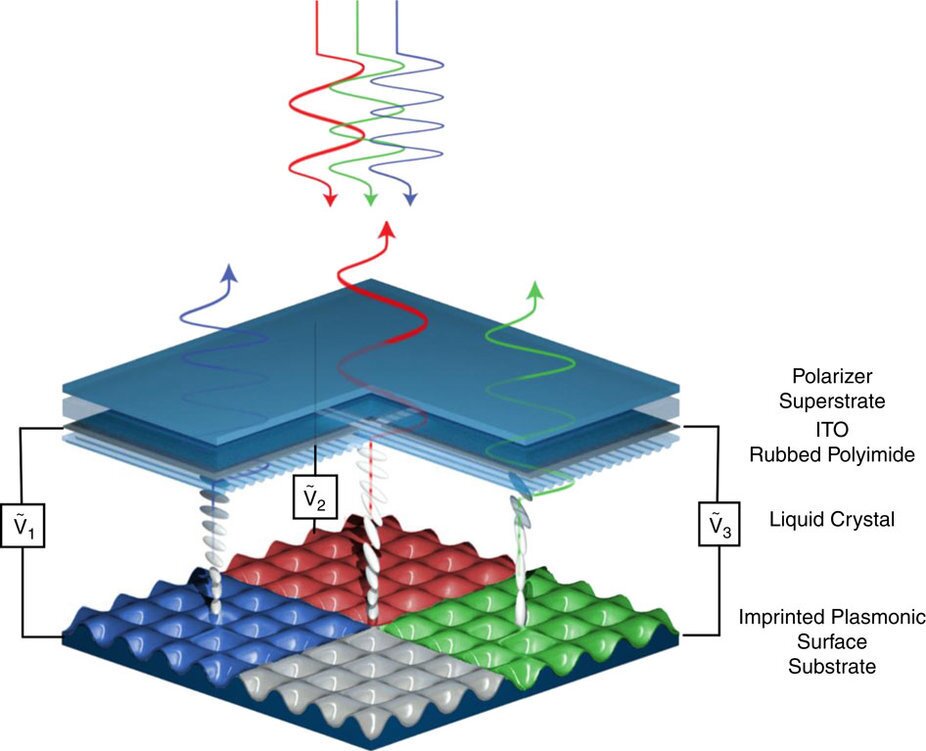No matter how many pixels are crammed into a screen, consumers are always hungry for more, with 4K TVs increasingly common, and 8K displays on the horizon. Now nanoscientists at the University of Central Florida (UCF) have developed a way to effectively shrink each of those pixels down to a third of their size, using different voltages to tune the color of individual subpixels to red, green or blue. The result could be screens with much higher resolution and improved brightness.
Small as they are, the pixels in a screen aren't the smallest unit. Underneath each one are three subpixels: one red, one green, and one blue, and these light up in different combinations and brightnesses to give each pixel an overall color. By design these subpixels are usually stuck displaying just the one color, but UCF's new technique could change that.
"We can make a red subpixel go to blue, for instance," says Debashis Chanda, lead author of the study. "In other displays that is not possible because they need three static color filters to show the full RGB range. We don't need that now; a single subpixel can be tuned across a given color gamut."
Each of the team's subpixels is made up of a bumpy nano-sized surface, like a tiny egg carton, coated in a layer of aluminum. By sending different voltages through this material, the subpixels can be made to display different colors in the RGB spectrum. That means that each subpixel can now act like a regular pixel at a third of the size, effectively increasing the potential resolution of a display threefold.

"A subpixel-less display can increase resolution drastically," says Daniel Franklin, co-author of the study. "You can have a much smaller area that can do all three."
The system could have other advantages as well. Currently, to make a pixel display solidly red, blue or green, the other subpixels are turned off. But the new system would allow all a pixel's subpixels display those colors, improving the overall brightness of screens.
Along with TVs and computer screens, that improved visual fidelity could be particularly useful for fixing the grainy, "screen door" effect that some virtual reality headsets suffer from, on account of the display being so close to the viewer's face.
The researchers are confident that their system can be incorporated into existing LCD devices fairly easily, because the rest of the hardware remains the same. The next steps for the team are to find ways to scale the technology up to make it practical for commercial applications.
The research was published in the journal Nature Communications.
Source: University of Central Florida


